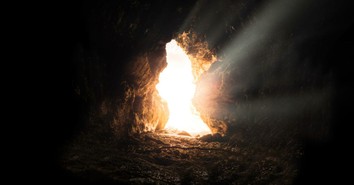What Makes the Shema Prayer Relevant to Christians Today?

For thousands of years, Jewish families have gathered around their tables every morning and evening to recite the Shema prayer. This ancient prayer is the foundation of their faith, but it’s also a very important piece of Christianity, even though many believers don’t know about it. This important prayer can be found in both the Christian and Jewish Bibles (specifically in the Torah).
Where is the Shema Prayer in the Bible?
The Shema prayer combines three sections of Scripture:
Many Christians are familiar with the first line of the Shema, “Hear, O Israel: The Lord our God, the Lord is one. Love the Lord your God with all your heart and with all your soul and with all your strength” (Deuteronomy 6:4). It sounds familiar to us because Jesus recited it in response to a question from a teacher of the Law in Mark 12. The teacher asked Jesus which was the greatest commandment, and Jesus responded with this scripture. All the Pharisees knew it by heart because it was the declaration of faith they proclaimed daily.
The second section (Deuteronomy 11:13-21) of the Shema prayer gave specific instructions for God’s people to “bind” the law on their arms and foreheads (tefillin) and to place the law in a little box (mezuzah) at the entry of their homes. The third section in Numbers gave specific directives for the tassels, called tzitzits, on their prayer shawls.
What Does the Word Shema Mean in the Bible?
You may be wondering what “shema” means or why the term is used for a prayer. Shema is the first word in Deuteronomy 6:4: “Hear (Shema), O Israel, the LORD your God, the LORD is one.” As Western believers in God, we read this as a command to listen, but it’s so much more.
Sylvia Schroeder explains that in Hebrew, hearing and listening involved obeying—much like when a parent commands a child to listen. We’ve all experienced this. When we’ve been told to listen, the intent behind the command is our obedience. In the same way, on the surface, “shema” is translated as “hear,” but the underlying command is to respond obediently.
How Else Does the Bible Use the Word Shema?
This important Hebrew word can be found throughout the Old Testament in prayers. Just as God instructed the Israelites to “hear” or “listen,” God’s people employed this word in desperate prayers. David cried out in Psalm 143:1:
“Lord, hear [shema] my prayer,
listen to my cry for mercy;
in your faithfulness and righteousness
come to my relief.”
When David asked God to hear or listen, he petitioned for deliverance from his enemies. In the same sense, God used this word in Exodus 3:7 when He stated that He had heard the Hebrew slaves crying out because of their oppression. His words indicated He would free them, and He did.
We also see shema being used in Genesis. According to the Bible Project, one tender use of this word came through the lips of Leah. Leah and Rachel were both married to Jacob, but Rachel was the wife he loved. Leah had hoped her ability to have children would change Jacob’s heart toward her, but it did not. After her second child’s birth, the brokenhearted, unloved Leah proclaimed, “Because the Lord heard that I am not loved, he gave me this one too” (Genesis 29:33). God did not turn a deaf ear to her pain. She believed the second child proved God was listening to her heart and petitions. Again, His hearing prompted divine action.
Jesus also used this word. Though the New Testament was written in Greek, which means the Hebrew word shema is not found in the New Testament text, Jesus quoted a prophecy from Isaiah 6:10 when His disciples asked why He taught with parables. We must remember Jesus spoke in Arabic or Hebrew. When He cried out for the people to have ears to hear (Matthew 11:15), He invited them to come back to God and obey Him, most likely using the word shema.
How Do People Use the Shema Prayer Today?
Most of us think of prayer as a petition to God. Our prayers may include praise and thanksgiving, maybe repentance, but we rarely think of using a statement of faith for prayer. But that is what the Shema prayer is—a statement of faith, a reminder to God’s people of Who they worship and His instructions for living.
Jewish people use this prayer every morning and evening. It’s a daily reminder of God’s Oneness and their duty to love Him, study His Word, and teach it to their children.
Traditionally, this prayer is recited during Yom Kippur, the holiest day of the year in the Jewish faith, also known as the Day of Atonement.
What Can Christians Learn from the Shema Prayer?
Though reciting the Shema prayer is a Jewish tradition, the fact it is a prayer from the Bible makes it relevant to Christians, too. As believers, we’ve entered the New Covenant of Grace and salvation by faith, but the Shema prayer is our heritage, too.
This does not mean we must literally bind the law on our arms and foreheads, but the figurative meaning is powerful as we memorize scripture and study. We don’t need to wear prayer shawls with white and royal blue tassels attached to the corners, but we are called to pray daily and to remember His Law, which the knots in the tassels represent.
What Does Jesus Say about Loving Shema and the Law?
Jesus made the Law very simple when He gave us the two greatest commandments. The first came from the Shema prayer, as discussed earlier. If we don’t glean anything else from this prayer other than the reminder to love God with every fiber of our being, then that will be enough, but Jesus gave us the second-greatest law, too.
He proclaimed that the second greatest commandment was to love our neighbor as we love ourselves (Leviticus 19:18). It’s not part of the Shema, but it was part of the Law. The teacher who questioned Jesus in Mark 12 was impressed. He agreed, “You are right in saying that God is one, and there is no other but him. To love him with all your heart, with all your understanding, and with all your strength, and to love your neighbor as yourself is more important than all burnt offerings and sacrifices” (Mark 12:32-33).
The teacher’s response also held biblical weight. The end of his sentence was about Hosea 6:6 when God told the Israelites He desired mercy, not sacrifice. Not very many encounters between Jesus and Pharisees ended in agreement. But maybe this one did because Jesus’s answer first started with the Shema.
What Happens When We Pray the Shema?
Jesus was Jewish. May we never forget that. If the Shema prayer was important to Him, perhaps we should make it part of our daily routine, too—at least the first section. Let’s pray Deuteronomy 6:4-8 together:
“Hear, O Israel: The Lord our God, the Lord is one. Love the Lord your God with all your heart and with all your soul and with all your strength. These commandments that I give you today are to be on your hearts. Impress them on your children. Talk about them when you sit at home and when you walk along the road, when you lie down and when you get up.”
Amen.
Isn’t it good to know how simple faith can be in this complicated world? The Shema prayer can bring clarity to our day, remind us of what’s important, and unite us with our Jewish brothers and sisters. It’s an important prayer/statement of faith for all who love God.
Photo Credit:©Getty Images/MiniMoon Photo
Andy Lee is an event speaker, blogger, YouTuber, and award winning author of three books, A Mary Like Me; The Book of Ruth Key-Word Bible Study, and Radiant Influence: How an ordinary girl changed the world. She passionately teaches how to find life in God's Word in order to live abundantly. You can catch her life giving messages weekly on Instagram and YouTube. She also provides monthly Bible reading plans and articles on her website www.wordsbyandylee.
This article is part of our larger resource library of Christian questions important to the Christian faith. From core beliefs to what the Bible says about angels, we want to provide easy to read and understand articles that answer your questions about Christian living.
What Do Christians Believe?
Is Gambling a Sin?
Is Drinking Alcohol a Sin?
What Does God Look Like?
Are Guardian Angels Real?
What is Heaven Like?
Originally published July 09, 2024.





